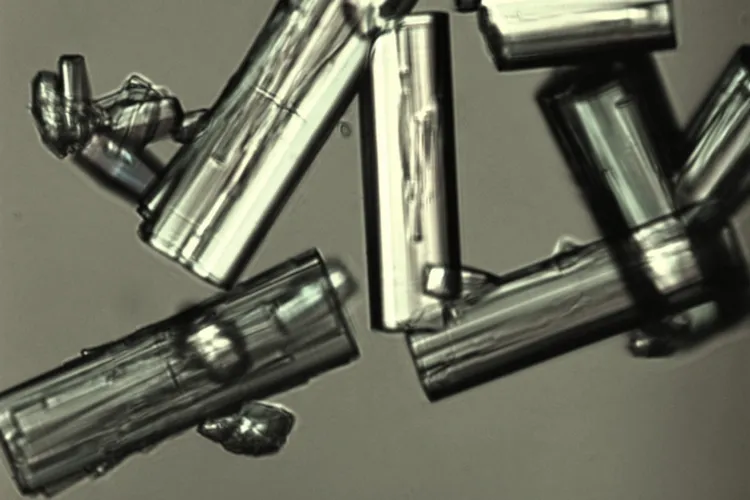This Device Pulls Water Out of Desert Air
A new water harvester can extract water from extremely dry air, using only solar energy
/https://tf-cmsv2-smithsonianmag-media.s3.amazonaws.com/filer/a3/5d/a35dad5b-4fd7-4b91-a6f3-ff622a9bb99d/harvesterinberkeley750_1.jpg)
Droughts have been making headlines across the world in recent years, from the California water crisis to Cape Town’s severe water shortage, and research suggests 25 percent of the globe could eventually be left in permanent drought due to climate change. But what if you could simply pull water from the air?
That’s the premise of a new technology developed by University of California, Berkeley researchers. It’s a water harvester that can extract water from the air, even in extremely dry climates, using no energy other than ambient sunlight.
The key to the water harvester is a new class of materials called metal-organic frameworks (MOFs). These MOFs are solid but porous materials with enormous surface areas—an MOF the size of sugar cube can have the internal surface area as big as many football fields. This means they can absorb gases and liquids, and then release them quickly when heat is added.
“Certain MOFs as we showed here have an extraordinary ability to suck in water vapor from the atmosphere, but then at the same time do not hold on to the water molecules inside their pores too tightly so that it is easy to get the water out,” says Omar Yaghi, a professor of chemistry at Berkeley, who led the research.
The researchers tested the harvester in Scottsdale, Arizona, a desert town with a high of 40 percent humidity at night and 8 percent humidity during the day. Based on the trials using a zironium-based MOF, the researchers believe that the harvester could ultimately extract about 3 ounces of water per pound of MOF per day.
The harvester itself is a box inside a box. The inner box contains a bed of MOFs. The outer box is a two-foot transparent plastic cube. At night, the researchers left the top off the outer box to let air flow past the MOFs. In the day, they put the top back on so the box would be heated by the sun. The heat would pull the water out of the MOFs, where it would condense on the inner walls of the plastic cube before dripping to the bottom, where it could be collected.
“The most important aspect of this technology is that it is completely energy-passive,” says Eugene Kapustin, a Berkeley graduate student who worked on the research.
That is to say, it needs no energy besides the sun, making it environmentally friendly and accessible to people in places with limited electricity. The results of the trials were published earlier this month in the journal Science Advances.
The team needs to conduct more trials on the current models to figure out which factors, such as device size and where the MOF is placed within the device, most affect how much water can be harvested. They also hope to learn more about how specific climate conditions affect water yield. The next trial is planned for late summer in Death Valley, where the nighttime humidity can be as low as 25 percent.

Yaghi has also developed a new aluminum-based MOF he says is 150 times cheaper and can capture twice as much water as the current MOFs. He and his team are designing a new water harvester that actively pulls air into the MOFs at high speed, thus delivering a much larger volume of water.
The team is now partnering with industry to test harvesters on an industrial scale. They also continue to search for newer, better and cheaper MOFs.
“I am very happy to see that more and more researchers around the world are joining our efforts in this regard,” Yaghi says.
The idea of sucking water out of the atmosphere is not new, says Eric Hoek, an engineering professor at the University of California, Los Angeles and editor of the journal npj Clean Water. It’s long been noted that when you run an air conditioner, water drips out—this is because the machine is cooling the air to the dew point, the temperature at which the air is saturated with water vapor and condensation occurs.
But creating water harvesters based on cooling technology is incredibly energy intense. In very dry climates, the dew point is below zero. Cooling the air to that temperature at any large scale is unfeasible.
“The real innovation [of Yaghi’s research] is a materials innovation,” Hoek says. “These materials [the MOFs] pull water out and more easily give it up.”
But the concept is challenging to scale, Hoek cautions, as the amount of water produced per square inch of harvester is relatively low, and thus a large harvester would potentially take up a huge amount of land.
“But maybe for a household or village scale it could be a very interesting way for someone off the grid to get fresh water,” Hoek says.
Yaghi imagines exactly that: a future where everyone without easy access to fresh water has a harvester in their yard.
“My vision is to achieve ‘personalized water,’ where people in water stressed regions have a device at home running on ambient solar, delivering the water that satisfies the basic needs of the individuals,” he says. “More than one third of the population in the world lives in water-stressed regions or is suffering from lack of clean water. The potential implications of this technology in transforming people’s lives and improving the global public health conditions are tremendous.”
/https://tf-cmsv2-smithsonianmag-media.s3.amazonaws.com/accounts/headshot/matchar.png)


/https://tf-cmsv2-smithsonianmag-media.s3.amazonaws.com/accounts/headshot/matchar.png)